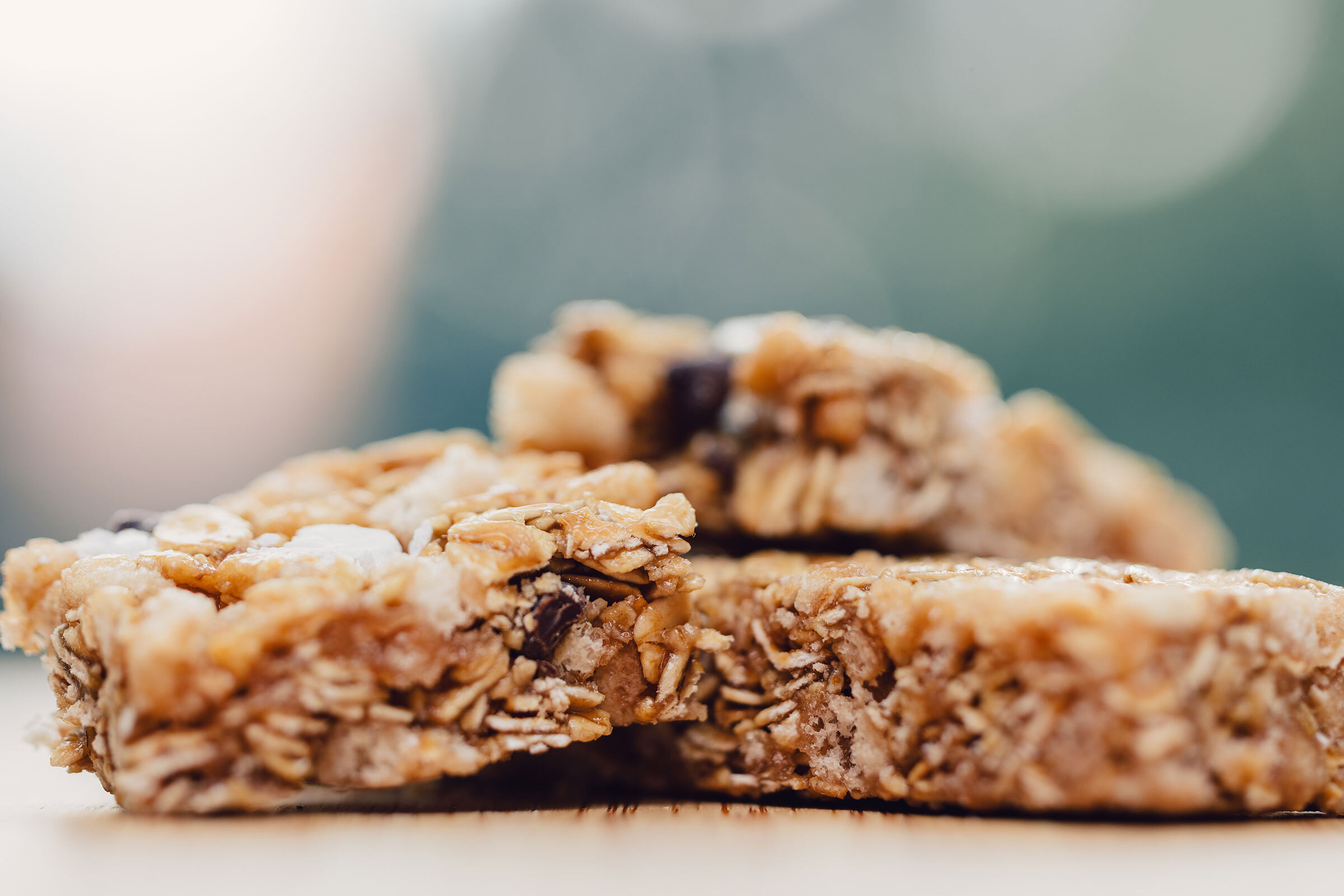Novel press design helps Jeca make more energy bars without lowering the bar on taste and nutrition
What you need to know:
- Growing demand for its alternative take on nutritional bars pushed Jeca’s production process to the limit. However, when the company purchased new commercial equipment to increase production, achieving consistent quality turned out to be time-consuming and difficult, if not impossible.
- To solve this problem, the Buffalo-based food manufacturer partnered with RIT’s Center of Excellence in Advanced Manufacturing (COE-ASM). Together, they developed a novel pressing solution and modified Jeca’s cutting method to meet regulatory guidelines.
- COE-ASM worked with Jeca to create a final design—a package of computer-aided design (CAD) files and a bill of materials—that was used to fabricate the new system. The prototype improved overall costs and productivity without sacrificing Dolnick’s original recipe or quality.
- Jeca is already using the prototype to fulfill large orders from national retailers without having to rely on third-party services. A future automated version of the press has been designed to keep up with increases in demand.
When Ree Dolnick launched Jeca Energy Bars Co. LLC (Jeca) in 2015, she knew she wanted to create an artisanal energy bar that was different from the rest. What she didn’t know was that adding less sugar than what’s found in similar products would mean rethinking her entire manufacturing process—her low-sugar recipes didn’t work on conventional equipment for making bars.
A mother with a career spanning cancer research and culinary arts, Dolnick founded Jeca in Buffalo, New York, to craft a healthy, delicious snack. Featuring flavors inspired by Thai, Japanese, Indian, and Californian cuisines, Jeca’s bars aim to offer a “clean eating” experience with no gluten, dairy, soy, oils, preservatives, or refined sugars.
By 2022, demand for Jeca’s bars forced Dolnick to consider options for scaling up production from a largely manual process to a mechanized one. However, when she purchased an off-the-shelf, commercial-grade, heated rolling-and-cutting station, problems arose. Ingredients would stick to the equipment, and the overall thickness and density was inconsistent. The process required extensive labor and time, and often led to unsatisfactory results—the product did not meet standard tolerances set by the U.S. Food and Drug Administration.
“We couldn’t go after the larger accounts because of capacity,” Dolnick explained. “So we were stuck in a difficult place where we didn’t want to change our recipe so it would work on co-packers’ equipment.”
Dolnick eventually found the culprit: the low sugar content and texture of Jeca's bars. Most conventional bars on the market are made using equipment that relies on the unique flow properties of sugar to work. But, when less sugar is used, the machine fails to bring together the ingredients as intended.
To remedy the problem, Dolnick had to make a choice: Change her recipe to include more sugar in order to use conventional presses or find an alternative method that would allow her to manufacture using the original Jeca recipes. Ultimately, she was confident that she could find the right manufacturing solution without sacrificing nutritional and culinary value.

Dolnick found that solution when she reached out to the Center of Excellence in Advanced and Sustainable Manufacturing (COE-ASM) at RIT’s Golisano Institute for Sustainability's (GIS). She worked with Brandon Baker, a staff engineer at COE-ASM, to eventually design a prototype for a new rolling-pin based press. Together, they documented Jeca’s production process carefully before determining what improved equipment would require in terms of meeting cost limits, throughput rates, bar size, density, and regulatory standards. By working up from experimental lab tests to understand the material properties of Jeca’s ingredients, Baker and the COE-ASM team created a series of design concepts for a mechanical system that could achieve the right density and thickness. Their goal was to produce specifications that would simultaneously ease physical strain on employees and drive overall productivity.
“Processing Jeca’s granola mixture into repeatable, uniform products without compromising on their unique texture, structure, or taste was a real challenge,” said Baker. “We valued Ree’s willingness to collaborate closely with us on this project. Her input definitely helped us find an optimal solution.”
Baker and his team proposed various design concepts. Eventually this list was refined based on discussions with Dolnick, weighing the pros and cons of each and incorporating learnings about how Jeca’s ingredient mixture behaved during production. A package including computer-aided design (CAD) files and a bill of materials (which lists everything needed to make it, just like a recipe) was created to fabricate the design.
The new rolling-press station, along with spare cutting boards and guide rails, is now in use in Jeca’s facility. Along with the functioning prototype, COE-ASM provided Jeca with the original design package so Dolnick can continue to improve and develop the machine as needed.
So far, results are good. The station has delivered consistent results, hitting the size, weight, density, and texture Dolnick expects for the bars. “This is just the beginning,” she noted. “This is a prototype that we can duplicate based off the module. The design is so simple and elegant, that to go and have another one made is not a huge lift.”



